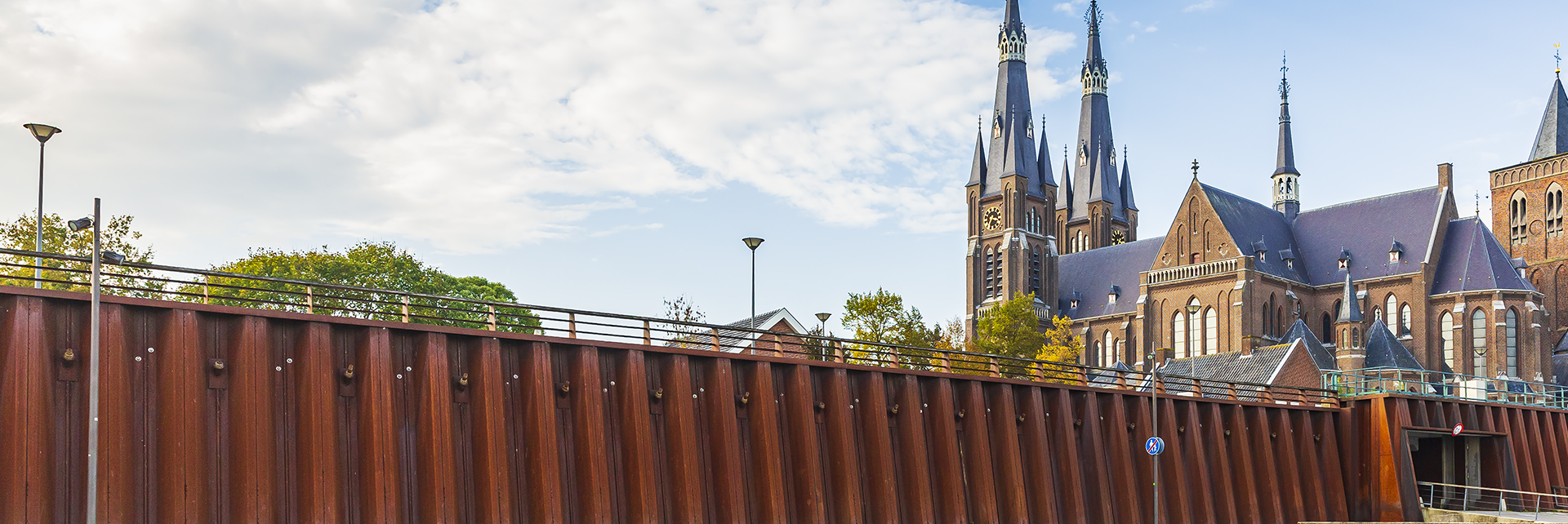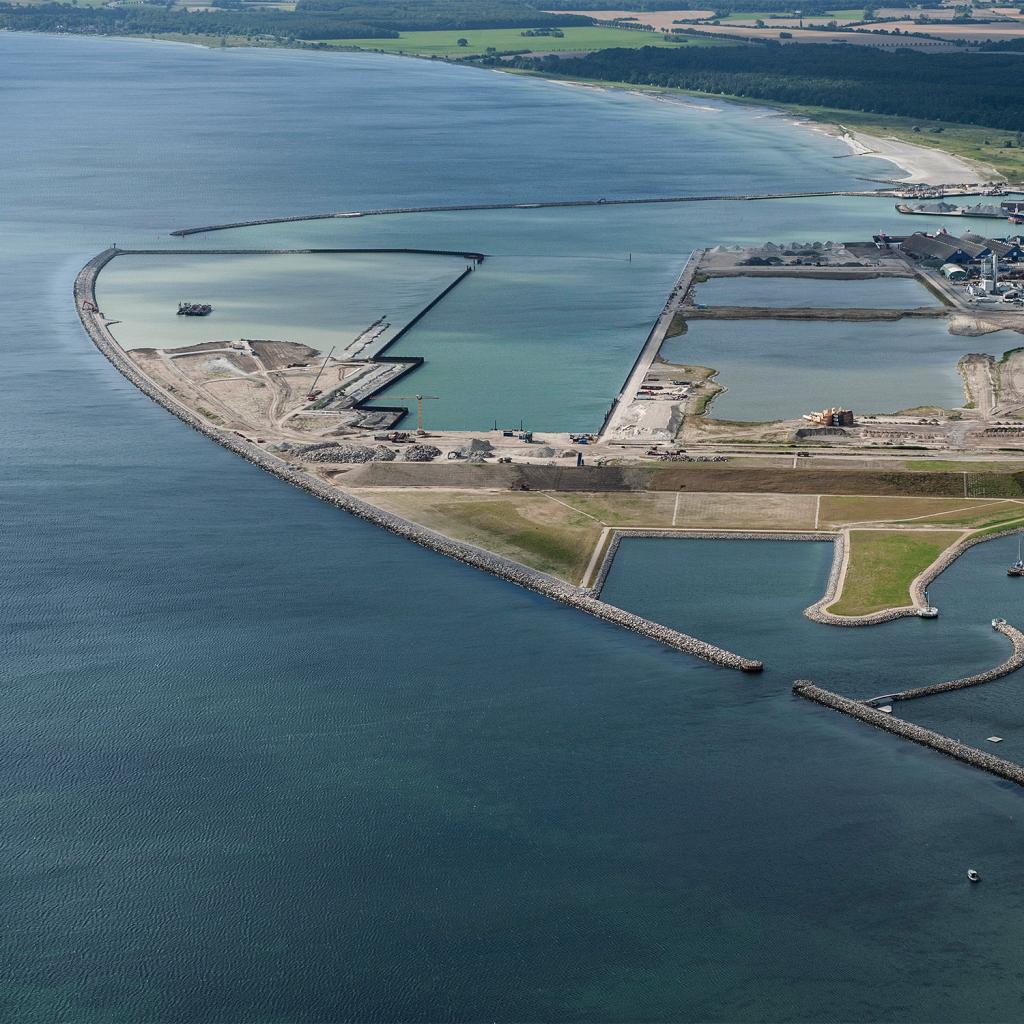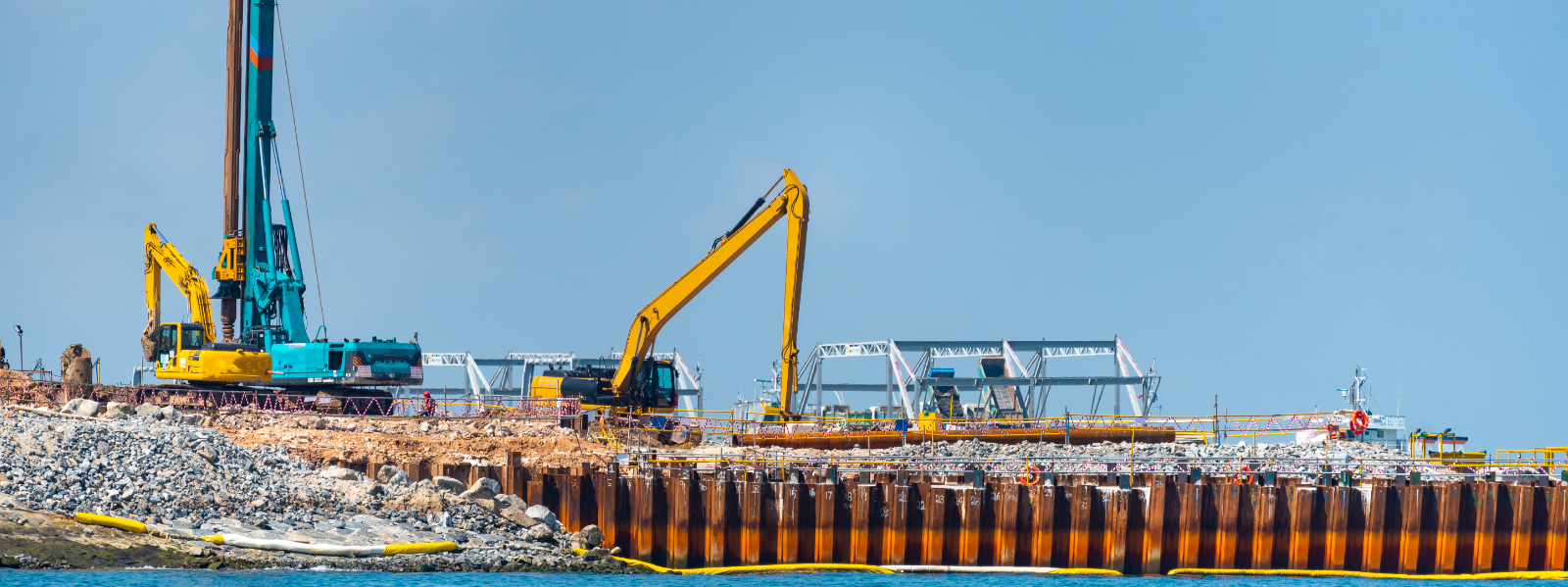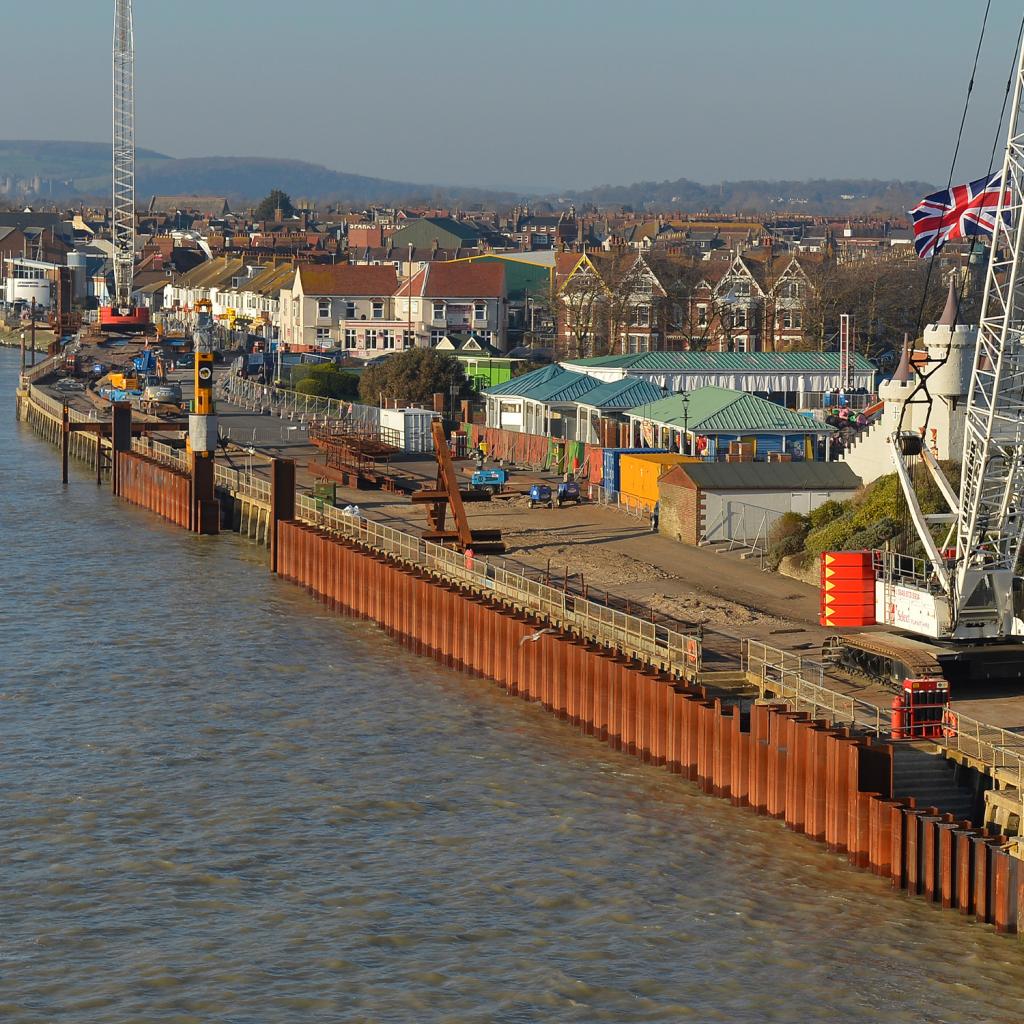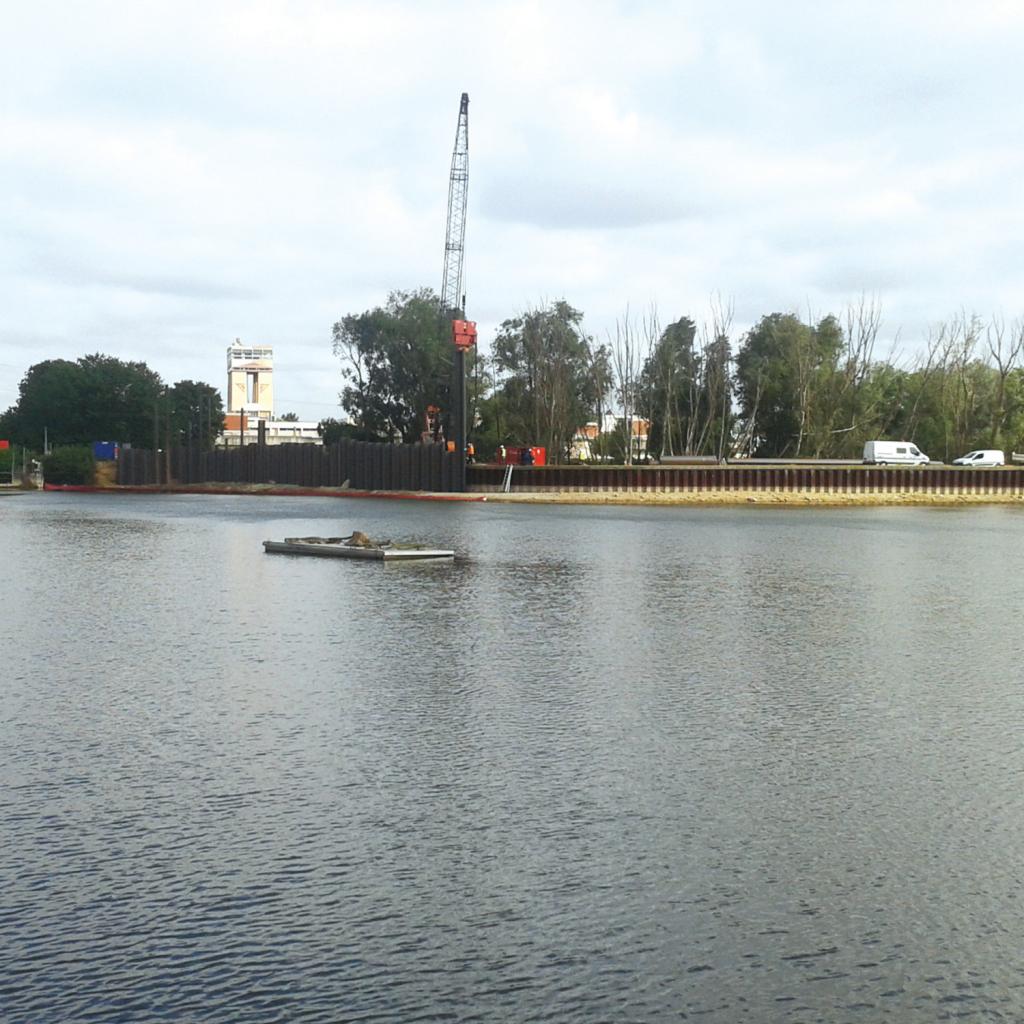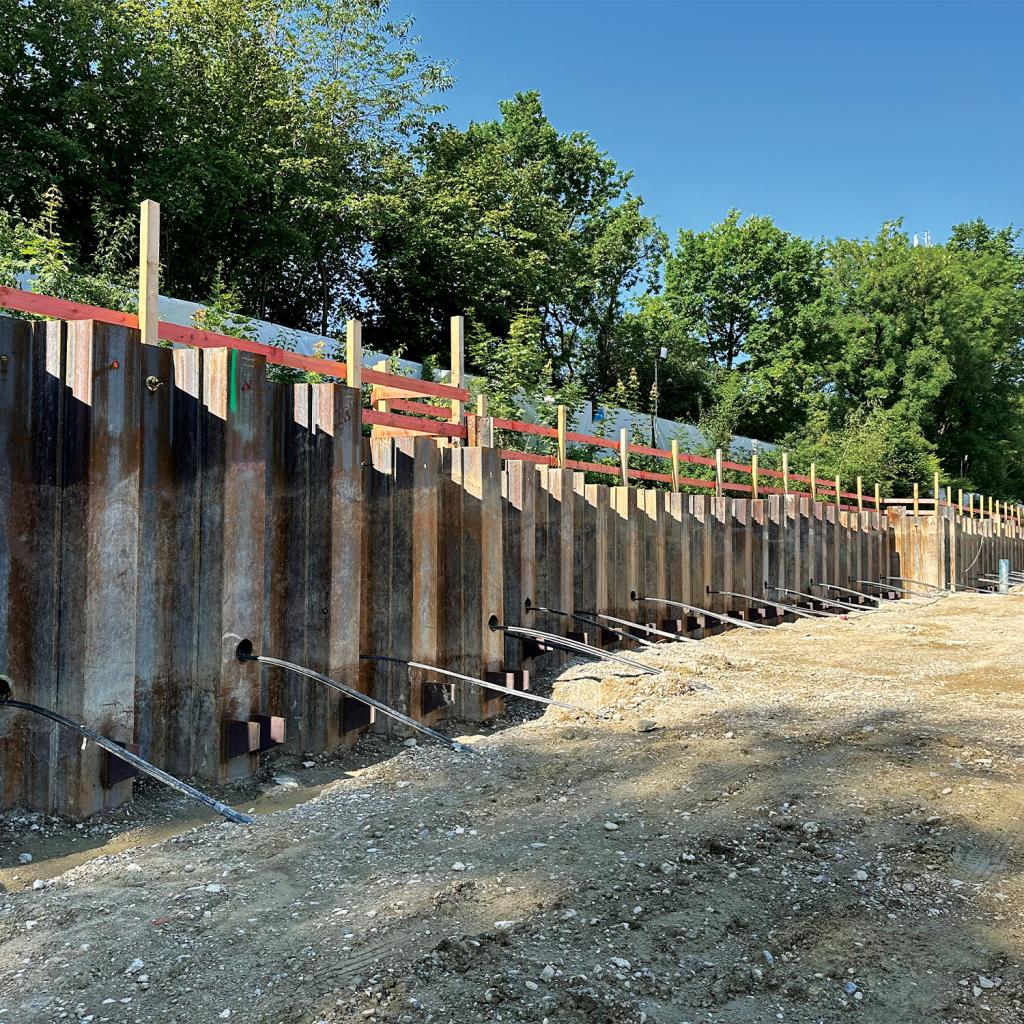Applications
Water Transport Solution, Hazard Protection Solutions, Mobility Infrastructure Solutions, Environmental Protection Solutions
Building infrastructure projects with our innovative solutions and unmatched services facilitates the delivery of global goods right to your doorstep.
ArcelorMittal Steel Sheet Piling Solutions
Steel is essential to modern construction. Flexible, adaptable, strong, durable, reusable and entirely recyclable, steel is the material of choice for sustainable solutions in today's economy.
Choose ArcelorMittal steel sheet piling solutions and turn your ideas into reality. Our professional teams stand behind you to ensure the success of your projects, from start to finish. Our advanced and sustainable solutions take your projects further, with unmatched technical support, careful planning and certified quality.
Water Transport Solution
Cost-effective and sustainable water transport infrastructures
Water-based transport is essential to our global economy. Maritime and fluvial transport requires a safe and reliable infrastructure network.
For over a hundred years, steel sheet piling products have been chosen to build all types of maritime infrastructures such as breakwaters, quay walls, jetties, canals and locks.
Steel sheet piling solutions are cost-effective, quick to execute and durable, with low maintenance requirements throughout their service life.
ArcelorMittal‘s engineering and R&D teams enhance continuously our product and service offer. We collaborate with research institutions and consultants to develop design softwares like AMRetain® or Durability®, as well as new construction methodologies.
HZ®-M combined wall and AS 500® cellular systems are ideal solutions for deep-water port construction and land reclamation. These systems can dramatically reduce the life-time cost of the project.
Steel sheet piles are 100% recyclable and a highly sustainable solution. A specific European Environmental Product Declaration has been granted to ArcelorMittal Sheet Piling‘s product range.
Facts and figures
- Up to 13% cost reduction and 20% shorter construction time
- AMLoCor® steel grades are up to 5 times more corrosion-resistant than standard steel
- HZ®-M combined wall systems have up to 25% lower carbon-footprint than equivalent concrete walls
AMLoCor® corrosion-resistant steel grades used for the expansion of the port ensure long-lasting and maintenance-free maritime infrastructures.
Comparative study
Sustainable ports
Hazard Protection Solutions
Faster construction of flood protection barriers with steel sheet piles
Keeping us safe with steel sheet piling solutions. Steel sheet piles help safeguard our communities from natural disasters.
Dykes and flood protection barriers made of steel sheet piles are one of the most efficient ways to protect against flooding and rising sea levels. Requiring little equipment, they can be easily installed even in remote locations with certified quality anywhere in the world. Dixeran® on-site declutching detectors ensure the integrity of the installation.
In seismic areas, emerging performance-based design methodologies reveal the true potential of steel sheet piling solutions to withstand earthquakes. ArcelorMittal‘s engineering teams help design safe steel sheet piling structures by simulating the effects of earthquakes or fire.
Facts and figures
- Up to 14% shorter installation times with AZ®-800, the widest sheet piles on the market
- Steel‘s natural ductility makes sheet piling the safest choice in seismic areas
- Customised delivery plans from our logictic teams align with demanding project schedules
The HZ®-M combined wall system was found to be the most economic and the best fitting technical solution to improve the tidal flood defences in Littlehampton, on the South Coast of England.
Comparative study
Flood defence and bank protection
Mobility Infrastructure Solutions
Less disruptive, cost-effective and quicker infrastructure constructions
Efficient and reliable mobility infrastructures make your journey smoother and safer.
The unique properties of steel sheet piles make them an excellent option for building road and railway infrastructures.
Projects are delivered faster, thanks to shorter installation times, saving costs. Sheet piles can be installed in complex configurations. Silent and low-vibration installation techniques minimise impacts on the community in urban settings.
Our technical departments support project developers and engineers in selecting and designing the optimal steel solutions, with the help of ArcelorMittal design software, such as AMRetain™, ProSheet, Durability® or VLoad.
Building Information Modelling (BIM) digital objects are available for ArcelorMittal steel sheet piles.
Facts and figures
- Steel sheet pile walls cost up to 54% less than traditional cast-in-place concrete walls
- Building bridge abutments with steel sheet piles reduce the traffic disruption thanks to 10% faster construction time, and up to 15% less economic impact on the community during the service life
- AZ®52-700 strongest sheet piles offer outstanding retaining strength
The steel sheet piles first used to support the excavation, also serve as the permanent outer walls of the car park. They were installed with low-vibration techniques to preserve the surrounding city centre.
Comparative study
Underground car parks
Environmental Protection Solutions
Impervious, reusable and sustainable containment structures
Steel helps to protect our future. When faced with pollution, containment is vital.
Steel sheet piles are used on a temporary and permanent basis in landfill conversion, polluted soil remediation, riverbed cleaning operations or pollution containment.
Impervious enclosures can be created quickly with AZ®-800 wide steel sheet piles, to safely retain contaminated material as part of a remediation plan. ArcelorMittal‘s wide range of sealing solutions ensure complete water-tightness, even in the presence of highly aggressive chemicals.
Steel is a permanent material: never consumed, but continuously transformed and reused, thus reducing the pressure on limited natural resources.
Steel sheet piles are a major contributor to the circular economy. They are reusable and 100% recyclable. ArcelorMittal‘s EcoSheetPile™ are produced from 100% recycled steel.
Facts and figures
- AKILA® is an environment-friendly sealant suitable for use in contact with groundwater
- Reusing sheet piles generates up to 7 times less global warming potential than the equivalent concrete retaining walls
- Customised fabrication and assembling solutions adapted to customers‘ requirements
To protect a water treatment plant near Paris, a 300,000 m³ retention basin was built using steel sheet piles and specifically designed to reduce the impact on the nearby forest.
Comparative study
Environmental Protection Solutions
Steel foundations
Steel has been used for ages to build piled foundations for large buildings and skyscrapers. The main advantages of steel foundations are that steel is very resistant, much stronger than soils in which they are driven, so that they can resist very high loads.
Steel foundations are easily adaptable construction elements. Indeed, it is quite simple and cost-effective to adapt the length of an H-pile or of a steel tube on the job-site, for instance when the required bearing capacity is not achieved with the designed length. If the pile is too short, splicing can be performed, if it is too long, the pile can be cut off at the required elevation.
A reassuring feature of steel solutions is that the customer knows the quality of all the components that will be driven into the ground already before the installation. Besides, the quality of the steel element is identical all over the driven length.
In port structures, crane rails are usually placed on concrete beams, which rest on one or two lines of steel bearing piles driven at an equal distance.
Bridge abutments, basements,… are applications where steel sheet pile walls can be designed both as a retaining and as a bearing structure to transfer vertical loads from the superstructure to the soil.
Large tubular steel piles are the preferred solution in many maritime ports for the execution of deck on pile structures.
In very hard soil conditions, hardened H-piles driving points will protect the toe of the pile from damage.
H-piles are very commonly used in the USA as foundations for buildings and bridge constructions. In Hong Kong, H-piles with very high yield strength (up to 460 MPa) have been used a couple of times in recent high-rise buildings projects.
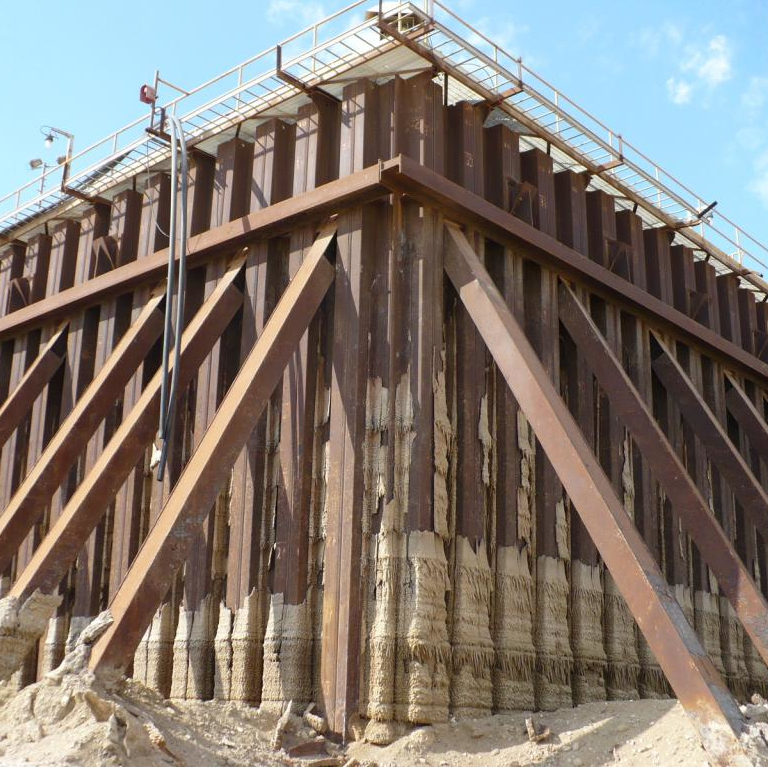
Retaining wall strengthened with H-piles.
Comparative study
Steel foundations
Temporary works
Steel sheet piles can be utilised for temporary soil and water retention applications, with profiles and lengths to suit anything from the smallest to the biggest task
Steel sheet piles can be driven, extracted and reused many times, making them a top solution in terms of circular economy and environmental life cycle considerations
Steel sheet piles have been used for temporary applications for decades because they save time and money on site. Given the reusability of these sections, there are several business models to optimise the economy of a project: sheet piles can be rented, purchased for re-sale or for buy-back at the end the project, or kept for future works.
The safety benefits of steel sheet piles in construction projects
Steel sheet piles’ technical properties further contribute to safety:
- Ductility: inherent to all steel products. Even when overloaded beyond design limit sheet piles will deform substantially before failing, thus providing warning and time for corrective measures. This is a great advantage compared to materials like concrete or timber that display brittle and catastrophic failure with little or no warning.
- Reliability: as steel is homogenous and constant in its properties, it can be relied on to perform as it is expected every time.
- Quality control: steel sheet piles are produced in compliance with rigorous European and international standards and undergo strict quality verification measures to ensure fulfilment of the specific section properties and characteristics.
Comparative study
Temporary works
